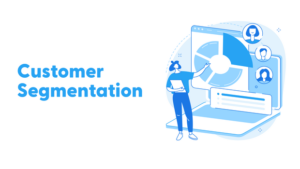Whether you run a small business or own a large enterprise, you must deal with an assortment of data that comes from plenty of files, databases, and several sources. Even though your organization might seem organized, the internal raw data remains disorganized. When a business uses this data correctly, it can unlock the true business potential and evolve and grow the business eventually. If you are looking to manage your data systematically, all you need to do is opt for data consolidation. To help you leverage the maximum benefits of data consolidation, we have curated this simple guide to help you understand the process in detail. Be sure to read the article until the end, as we have covered how you can choose the best tool to make the process easy.
What is Data Consolidation
Data consolidation is combining data from multiple sources, removing, and cleaning the errors and redundancies, and storing the cleaned and verified data in one single location, such as a database or data warehouse. As businesses produce data in different formats, it becomes easy to unify the data available in multiple formats and use it for business growth. When a business consolidates data, it helps them plan, implement, and execute business processes in addition to disaster recovery solutions. Being an important process data consolidation is an important process that allows you to simplify information access, enhance data quality, and process data faster.
How To Consolidate Data Seamlessly
There are a few simple ways or methods you can try when it comes to consolidating data. A business owner can opt for the two most common methods: hand-coding and software tools. Even though they are used for data consolidation, they are quite different.
Below we have curated a list of a few differences between the two tools or methods so that you can choose the right fit for your business.
| Hand Coding | Software Tools |
| It is a manual process. | It is a cloud-based or local process. |
| It requires a data engineer for operation. | It does not require a data engineer for operation. |
| It is a time-consuming process. | It works faster as compared to hand-coding. |
| It is suitable for small data consolidation when there are less or limited sources. | It is suitable for large data consolidation when the format is supported by ELT or ETL software tools. |
Remember, both the tools come with their pros and cons. That is why it is better to analyze the features and choose the one that fits your data consolidation needs well.
Step By Step Guide to Consolidate Data into Data Warehouse
The precise data consolidation process will entirely depend on the data’s specific features and scale. However, here are the common steps you need to follow during data consolidation.
Step 1 – Determine Your Business Goals
First, you need to understand your business goals for data consolidation. Your data consolidation goal can be analytics and reporting, enhancing the data quality, improving security, or setting up the master data management. These goals can be optional or core, depending on the specific needs and preferences of the customers. Apart from determining the goal, it would be best if you analyzed the potential risks, budget, time, skills required, and much more.
Step 2 – Discovery
After business analysis, you need to focus on the discovery process. The duration of the discovery process will entirely depend on the types and number of data source systems. Then, you need to focus on reviewing the data you need to integrate, understanding the current flow of data, reviewing the system connectivity, discovering best practices for data security, and so on. This step is quite important as it helps you to clear out the path you need to follow for data integration.
Step 3 – Tech Selection & Project Planning
Your next step is to select the optimal approach for the data integration from one location to its target destination. You can choose between ETL, or ELT based on the integration points, solution complexity level, and the number of data source systems. Depending on the tech you choose, you can start planning your project. The vital functionalities to consider while choosing a data warehouse include:
- Type of data storage
- Concurrency
- Data governance & management
- SQL dialect
- Elasticity
- Backup and recovery support
- Resilience and availability
- Security
Business intelligence tools should include:
- Seamless integration with cloud data warehouses
- Drag-and-drop interfaces.
- Data ingestion and exporting data files.
- Ability to conduct ad hoc calculations and reports.
- Automated reporting and notifications.
- Speed, performance, and responsiveness.
- Modeling layer with development mode.
- Extensive library of visualizations.
The cloud data warehouses and Business Intelligence tools that you will be using for your business should be compatible with each other.
Evaluate Data Integration Tools
There are many essential functionalities to consider while choosing data integration tools:
- Customization and configuration.
- Reliability and performance of the software.
- Quality and responsiveness of customer support teams.
- Ease of use and accessibility.
- Number and type of data sources covered.
- Costs and payment plans.
Make sure that you compare and then buy the data integration tool you require. There are many reviews and rating platforms for data integration tools that should be mutually compatible with the data warehouse and business intelligence tool.
Calculate Total Cost and ROI
Modern cloud data warehouses promote savings of time, money, and labor. Compare your current data integration workflow with a different competition in the market. Perform a thorough audit and calculate the cost of your current data pipeline before investing in data integration activities. The costs you need to consider are the costs of configuring and maintaining, opportunity costs incurred by failures, stoppages, and downtime. There will also be subscription costs for your data warehouse and BI tool.
Step 4 – Data Consolidation Architecture Design
This step revolves around master data management and detailed data profiling. You need to analyze and access the data quality and tag data with keywords, categories, and descriptions. Once it is done, you can move to discover and access the metadata along with accessing the risks of data consolidation.
Step 5 – Development, Stabilization & Launch
This step involves developing and testing the architecture of data consolidation, developing ELT or ETL pipelines and testing, implementing data quality management and validation, developing data models and structures, and much more. Once you successfully complete the development and stabilization process, you can opt for its launch. You can deploy the data consolidation solution, tune the performance of ETL or ELT, and adjust the availability and performance of adjusting data consolidation.
Data consolidation can be cumbersome and daunting, especially if you run short of time, effort, or resources. For such businesses, some companies provide data management services to assist businesses in getting data under one roof. The experts will take care of the entire process to ensure that you move your data and use it for your company’s growth.
Why Is Data Consolidation Important for Your Business
Data is one of the most important aspects of your business that make or breaks your entire organization. When used correctly, it can help you get the maximum benefits and understand what is working for you and what is not. As defined above, data consolidation is a means to use the data and grow your business properly. If you are still on the fence about why you need to opt for data consolidation, here are a few best benefits you should check out.
Data Quality
Rather than using any data in your business, you need to focus on the quality of your data. As they say, “having n data is even worse than having no data.” Data consolidation is a process that will help you to ensure that you are using the right and quality data to make informed decisions. The process of data consolidation involves the transformation of data into a consistent format. Thus, it helps you improve the integrity and quality of data before using it in your operations.
Data Analysis
There are many companies around that use business intelligence and analytics tools to get important business insights. Opting for data consolidation allows your company to have accurate data and ensure that you have a complete data set from every data source in your business. When you have the complete data from the data consolidation, it helps you to improve the decisions and make maximum profits.
Business Planning
Creating a business plan without having a complete and accurate overview of your business is not as easy as it seems. Data consolidation gives you complete knowledge of your entire business. You can use the consolidated data to improve business processes, create disaster recovery plans, and improve other business operations. Additionally, having all the data at a single point, i.e., a data warehouse, helps you plan for current and future data storage needs.
Even though there are other benefits, those mentioned above are the most important benefits of data consolidation.
Challenges Associated with Completing the Data Consolidation
The sheer amount of data collected from different business sources can help businesses in numerous ways. However, there are many challenges that a business owner faces during data consolidation. Below we have explained the challenges one can face during data consolidation.
Limited Resources
One of the most common challenges business owners’ faces is the availability of limited resources. Having inadequate resources in terms of time or money can make it hard for them to consolidate data. This is because when one consolidates data, one needs to spend a lot of time completing the project. In addition, they need a dedicated team of professionals who can complete the process smoothly. Even though data consolidation is beneficial to a large extent, one might find it hard to invest time and resources in it. The more complex your data consolidation is, the longer it will take to complete the process.
Incompatibility
Data that is generated by diverse sources is often not formatted. Thus, organizations need to format the data with the help of ETL tools before moving further. Even though hand coding is a practical way to overcome Incompatibility in data, it can be hard for organizations who run short of time. If you are a business owner who wishes to deal with Incompatibility, you must make yourself ready to spend time and resources.
Latency
Timely data is the most valuable and informative. However, a common issue a business owner discovers on this path is data latency. If the business owner uses a central data source, they will not be able to watch out for the most recent actions. This is because there is a time difference between initial data sources and data transfer to the data warehouse. Those who wish to eliminate the issue of data latency can choose frequent data transfers.
Data Security
Amongst all the other most crucial factors, data security is one of the most crucial concerns for every business owner taking steps to consolidate data in a single location. Even though centralized data location benefits your business, it can pose a high-security threat or risk. The simple way to overcome the situation is by taking all the necessary precautions and taking the latest security measures.
Like other technologies, data consolidation presents a few challenges in front of business owners. A perfect, right tool and expert guidance are the few ways to overcome the challenges and make your data consolidation process easy.
Tips To Choose the Best Data Integration Tool for Your Organization
To simplify and manage the data integration process, you must choose a tool that aligns with your organizational goals and objectives. Instead of preferring a tool with many features, one needs to go for a tool that matches your data integration requirements. A study reveals that 77% of business owners state that outdated, inconsistent, incomplete, or bad data have a negative impact on the bottom of their business. For this reason, choosing the data integration tools that can help your business grow and scale with the help of complete, accurate, and consistent data is vital. Here are a few features you must check before finalizing the best-automated data integration tool for your organization.
- Bi- and multi-directional data synchronization to ensure that the tool offers timely and accurate synchronization between the two connected systems.
- Workflow automation to help data scientists to automate repetitive tasks and make their job easier.
- Quick data processing ensures that you do not have to spend extra resources, time, or effort on data consolidation and can easily simplify the data integration tasks.
- Supportive for all the source systems and formats to make data integration easy from the multiple resources.
Conclusion
When you choose quality and accurate data to get business insights, it directly helps you to get better revenue. Efficient collecting, consolidating, cleansing, and presenting of data is quite important as it helps you to unify the data and use it better. Data integration tools are the best way to simplify the data consolidation process for your in-house team. The tools are designed to automate the process and correctly utilize the data. If you are looking to choose the best-automated data integration tool to help you consolidate data from multiple sources to a data warehouse, look no further than our ecommerce-focused data pipeline – Daton.












